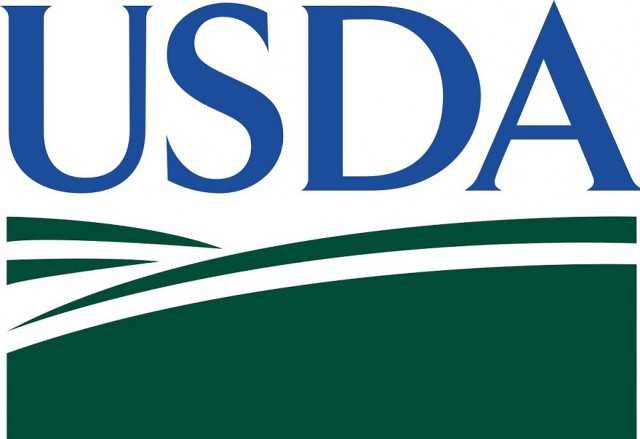BRASILIA, Brazil – The new annual report from USDA’s Foreign Agricultural Service forecasts the Brazilian coffee production for Marketing Year 2023/24 (July-June) at 66.4 million 60-kg bags, an increase of 3.8 million bags compared to the previous crop of 62.6 million 60 kg bags, far below an all-time high of 69.9 reached in Marketing Year 2020/21.
Arabica production is projected at 44.7 million bags, an increase of 12 percent from the previous season estimate of 39.8 million bags. Most of the producing areas are in the negative year of the biennial production cycle and rainfall volumes have been mostly favorable in all growing regions.
Minas Gerais experienced higher than average rains in January 2023 causing difficulties in controlling plant diseases and pests in some regions. This increase in water availability during the fruit development stage has resulted in coarser and heavier grains compared to the last crop, also leading to the increase in production estimate.
The coffee plants ended the 2022 season in a state of depletion due to frost and water stress that impacted crops for two consecutive years.
Robusta/Conilon production is forecast at 21.7 million bags, a 5 percent decrease relative to the 22.8 million bags estimated last season. The lower production is estimated on the decrease in productivity and poor weather conditions due to decreased rains during the early stages of the crop cycle.
The lower-than-average temperatures and strong winds were mainly observed in Espirito Santo. Even though starting in October 2022 optimal rains returned, the productivity of the crop had already been impacted in the dormancy and flowering phases, resulting in the lower production estimates than last marketing year. Post estimates a marginal increase in the harvest area.
In May 2023, the Brazilian Government, through the Ministry of Agriculture and Livestock (MAPA) National Supply Company (CONAB), released its second survey projecting Brazilian coffee production in MY 2023/24 at 54.74 million bags, a 3.82 million bag increase compared to MY 2022/23 (50.92 million bags). CONAB projects Arabica production at 37.93 million bags, whereas the Robusta/Conilon crop is forecast at 16.81 million bags. CONAB will release the third coffee survey for the 2023 crop in September.
The April 2023 coffee crop survey released by the Brazilian Institute for Geography and Statistics (IBGE), a Brazilian government agency under the Ministry of Economics that also publishes agricultural statistics, forecast the coffee production for MY 2023/24 at 55.7 million 60-kg bags (38.5 and 17.2 million bags of Arabica and Robusta/Conilon coffee, respectively), a 1.5 percent rise compared to the 2022 crop (54.9 million bags – 37.4 and 17.5 million bags of Arabica and Robusta/Conilon coffee, respectively). Both government agencies, CONAB and IBGE, use a different methodology to forecast coffee production than Post and, both have been consistently lower than Post’s estimates.
The total area planted for coffee for MY 2023/24 is projected slightly higher at 2.51 million hectares, an increase of less than one percent relative to the previous season. In contrast, coffee tree inventory is projected at 7.25 billion trees, a decrease of 300 million trees from the previous crop year.
The Brazilian coffee yield for MY 2023/24 is forecast at 30.57 bags/hectare, down five percent compared to the previous crop (32.26 bags/hectare). The decrease is caused by the second consecutive year of the negative biennial production cycle for Arabica trees.
Arabica production is estimated to increase this season but not to the volume typically experienced after a negative biennial production cycle year. Robusta production has also lowered the overall coffee yield due to a lack of rain.
Consumption in Brazil
Brazil’s domestic coffee consumption for MY 2023/24 is forecast at 22.56 million coffee bags (21.6 million bags of roast/ground and 960,000 bags of soluble coffee, respectively), based on updated information from post contacts and official economic indicators. This figure represents a marginal increase from MY 2022/23 (22.45 million bags – 21.5 million bags of roast/ground and 950,000 bags of soluble coffee, respectively).
Exports
Coffee exports for MY 2023/24 are forecast at 45.35 million 60-kg bags, green beans, an increase of twenty six percent relative to MY 2022/23 (36.645 million bags) due to the expected larger exportable surplus). Despite the significantly higher prices that prevailed in the last couple of years, Brazil remains competitive in the world market and the depreciated local currency (Real) has supported strong exports.
Soluble coffee exports are estimated at 4.3 million bags in MY 2023/24, an increase of 20 percent compared to the previous season of 3.6 million bags. The Russia – Ukraine war has continued to negatively affect soluble coffee imports to those countries. In 2020, Russia was Brazil’s second largest market for soluble coffee, exporting 334,057 bags to Russia. However in 2022, Brazil only exported 150,887 GBE to Russia, becoming the eight largest market. In 2020, Brazil exported 170,083 GBE to Ukraine compared to 40,300 bags in 2022/23.
Stocks
Post estimates total ending stocks in MY 2023/24 at 2.685 million bags, a decrease of 1.435 million bags compared to MY 2022/23 (4.12 million bags), due to expected larger coffee supply during the upcoming season.


















